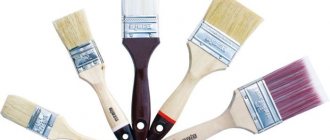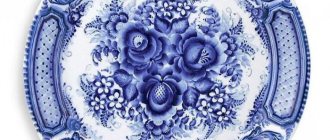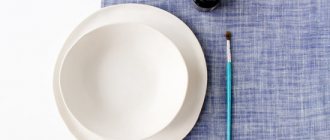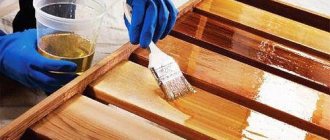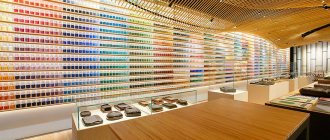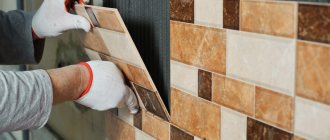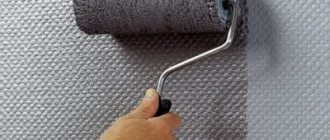I've been wanting to write about this for a long time.
I test the dishes myself and give them to friends.
They also, at my request, “test” my dishes. Security is a separate matter.
Quite often I see dishes here, painted with paints both with and without firing, as well as painted with acrylic, completely without a safe edge. It's not safe after all! It is necessary to leave a safe edge measuring 1.5-2 cm - for touching the lips!
No matter what they say about these paints, I'm leaving a safe edge for safety! Better to be safe!
And therefore we drink from cups calmly and enjoy life!
After all, this is handmade and there are no GOST standards here!
In no way do I want to make an anti-advertisement for other craftsmen who fully paint mugs.
And I don’t want to teach anyone. This is everyone's business.
But it's better to protect yourself.
And one more thing... it will be safer to make a drawing on the back of the mug, rather than on the front!
Plates, mugs, etc. - for food (Items are painted on the outside - for safety, so that there is no contact with food and so that a person does not touch the design with his lips. This condition is safe for using dishes.
What paints are suitable for glass?
There are many selection criteria. They produce transparent, translucent and opaque film coatings, glossy and matte. When selecting paint for glass, you should consider the method of fixing the dye to the surface. According to the generally accepted classification, there are 4 types of coatings:
- loose – washable;
- fixed by firing - heat treatment at +100...150°C is required;
- sticky or transformable;
- granulated for baking, they are more often used for vintage decoration, when you need to create an aging effect.
Please note: Painting glass
Heat-treated ones indicate the holding time and temperature. For beginners, it is better to choose washable options. Stained glass requires mixtures that do not require heat treatment.
Acrylic paints for glass
Durable materials are water-based, odorless, and environmentally friendly. The film-forming polymer hardens when exposed to air. It takes up to 12 hours for complete drying (polymerization). The complete drying time is indicated in the instructions. Acrylic paints for glass have a consistency similar to their oil counterparts. Wide brushes are used to apply the design, and aerosol cans are used to create the background. While the dye has not thickened, it is easy to correct the contours with a damp cloth or sponge. The label should indicate that these are compositions for glass. Acrylic compositions are called “sticky”; due to high humidity, the polymer layer completely slides off, leaving no traces.
Acrylic paints for glass and ceramics
Silicate based paints
Heat-resistant silicate coatings are finely dispersed, low-melting glazes, consisting of flux and dye. They are fired when heated to +550…600°C. Durable, melted to form a diffuse layer. After firing they become transparent or matte. Used to color everyday utensils and cannot be washed off in the dishwasher. Like glass, coatings are susceptible to abrasive treatment. Manufacturers offer sets of silicate-based dyes of 4 basic colors; by mixing, you can obtain any shades.
Paint for glass and porcelain
Stained glass paints
Mixtures that form transparent films after drying are usually called stained glass. In store windows you can find formulations based on:
- various resins;
- white spirit.
Pay attention to: Criteria for choosing paint for the facade, preparing the outer wall for painting and caring for the surface
Popular are paints that do not require firing, create a pearlescent effect due to tiny reflective particles, or contain glitter in the form of hearts and stars. Luster lamps contain metal powder; the color depends on the type of metal used. Matte translucent dyes are applied with a sponge to add roughness. Air bubbles sometimes form in films of stained glass dyes after drying. They are removed by piercing them with a needle.
Acrylic paint for stained glass
Polyurethane dyes
Waterproof stained glass paint mixtures with hardeners become durable without firing. Created using organic solvents, they are thick in consistency and have a pronounced pungent odor. They dry up to several days and are not afraid of moisture. You should work with polyurethane compounds with extreme caution; they have good adhesion; when painting on glass, they immediately stick to the glass. For dilution, it is advisable to use solvents of the same brand to avoid clumping. Lightproof structural paints for glass that imitate stone and leather are also created on the basis of a polyurethane base.
Transparent glass paint
Painting technology
Painting requires attention to detail at every stage of the procedure.
Tools and operating procedure
The following products can be used for application:
- Flat brush.
- Hard brush.
- Spray gun.
- Paint roller.
- Foam swab.
The choice of tool is determined from the point of view of the painter's convenience and surface area. It is easier to paint small glasses with a brush, but it is impossible to paint a large canvas efficiently without a spray bottle.
Procedure:
- After preliminary preparation of the glass, you need to install it on a flat surface in a horizontal position. Otherwise, the likelihood of leaks increases. Painting in a vertical position is used only in the case of a spray gun.
- Apply the paint in an even transition without streaks. It is recommended to do at least two layers with intermediate drying. Because The material is transparent; with a single layer of painting, unpainted paint will certainly appear.
- Wait until the fresh coat dries. After this, the glass can be fired or placed in a rack to dry completely.
How to consolidate the result?
Depending on the type of paint, one of the proposed methods is used:
- Drying out . Mandatory conditions: room temperature not lower than 18 degrees and relative humidity in the range of 50-80%. The time for complete drying of glass ranges from 1 to 48 hours depending on the paint.
- Seal with varnish . The product is applied in 1-2 layers so that the surface does not become glossy. It is recommended to purchase paint and varnish from the same manufacturer.
- Firing . If it is necessary to fix heat-resistant paint, the glass is placed in a special oven. At home, you can get by with a kitchen stove oven. The painted canvas is laid out on the oven grate, after which the required temperature is set. All that remains is to note the time and wait for the product to cool completely.
Application
Stained glass paints have their own application technology. First you need to purchase:
- a set of stained glass paints;
- contours for drawing on a glass surface;
- ready-made stencils, which you can make yourself if you wish;
- ethanol;
- brushes;
- cotton buds;
- toothpicks or needle.
Before you paint with stained glass paints, you should choose a pattern. You can take freely available templates and stencils for copying. Further, all work is carried out in stages and in a certain sequence.
Before painting glass, it is degreased with alcohol. If the artist has the talent and skills, then the pattern is applied with a marker. Otherwise, you can fix it on the back side of the product or transfer it to the front side from the stencil using carbon paper.
Each detail must be carefully outlined, avoiding breaks. Then you should wait for it to dry completely, the time indicated in the instructions.
Stained glass paints are applied in a dropwise manner, and then distributed with a brush from the center to the periphery in an even thick layer. Errors should be corrected immediately with cotton swabs, without allowing the coating to dry.
Having painted all the details of the same color, you need to thoroughly rinse the brush, wipe it dry and start working with a different shade. Stained glass paints form air bubbles in their thickness, which can be removed with the tip of a needle or a toothpick. To speed up the drying process of the finished pattern, you can use a hairdryer.
Application of acrylic coating
Painting on glass with acrylic paints also begins with degreasing the working surface and applying the design yourself or using a stencil.
While do-it-yourself stained glass paints are applied only to the contoured drawing, this is not necessary for their acrylic counterparts.
If you make an outline, the image will resemble a stained glass window. And without its use, the pattern will be stylized as a work of painting.
After drying, kitchen set items should be coated with heat-resistant varnish to increase their service life and preserve the colorful designs.
It is worth considering the fact that decorative, heat-resistant water-based acrylic paints dry very quickly, but require baking in the oven for durability.
Use of balloon covers
Aerosol paints are most often used for painting large glass items, although professional artists also use them to decorate small parts. This can be done without extensive drawing experience by using stencils or construction tape.
The following types of aerosol formulations can be purchased in specialized stores:
- oil;
- heat resistant;
- acrylic;
- latex and others.
Most often, aerosol paints for stained glass and other glass products have an acrylic base.
The production of heat-resistant aerosol material for processing certain types of dishes has also been launched.
The advantages of aerosol materials include:
- quick readiness for use;
- ability to penetrate hard-to-reach places;
- good adhesive properties;
- long shelf life without changing quality characteristics;
- no tools required for application;
- resistance to abrasion and fading;
- rich color palette;
- high drying speed.
Despite the abundance of advantages, aerosol paints also have some disadvantages:
- inability to dilute paint with solvent;
- complex application technique;
- mandatory use of stencils for drawing small details - this increases the consumption of expensive paint;
- aerosol materials of different colors cannot be mixed;
- use personal protective equipment such as goggles, a mask or a respirator while spraying.
When using aerosol acrylic paints, you should strictly follow the instructions to avoid the formation of drips and other defects.
When decorating glass surfaces outdoors, you need to choose windless, cool weather.
You can fix the applied pattern using transparent acrylic varnish.
